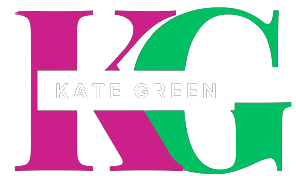Mark Cuban is a name synonymous with success, ambition, and fearless decision-making. From owning the Dallas Mavericks to his ventures in the tech and entertainment industries, Cuban’s financial journey is a testament to his remarkable ability to capitalize on both opportunity and risk.
However, perhaps the most defining moment in Cuba’s rise to wealth came in the late 1990s during the dotcom boom—specifically, his decision to sell his company Broadcast.com just as the internet bubble was about to burst.
That single decision would change his life forever, turning him into a billionaire. Let’s take a closer look at how Cuban’s one risky gamble reshaped his fortune and set him on a path to business dominance.
The Early Days: An Entrepreneur at Heart
Mark Cuban’s entrepreneurial spirit was evident from a young age. Growing up in Pittsburgh, Pennsylvania, he was always looking for ways to make money.
His first business venture came at the age of 12 when he began selling garbage bags door-to-door. His goal was simple—he wanted a new pair of high-end sneakers.
This early taste of entrepreneurship left a lasting impression, and as Cuban got older, he kept finding new ways to earn.
Throughout his teenage years, Cuban juggled multiple jobs, from bartending and teaching disco dancing to promoting parties.
By the time he reached college, he was already honing his skills as a businessman. He attended Indiana University’s Kelley School of Business, where he earned his degree and ran a bar, further expanding his entrepreneurial experience.
MUST READ: Nelson Bunker Hunt’s Silver Legacy: The Rise, Fall, and Impact of a Tycoon
The First Million: MicroSolutions
After relocating to Dallas, Cuban’s career took a significant turn when he took a job with a software company called Your Business Software. His job exposed him to the world of computer systems and software sales, but he quickly realized he could do things his way.
In 1983, Cuban was fired from his job, but rather than accept defeat, he used the opportunity to start his own business, MicroSolutions, a software reseller and system integration company.
MicroSolutions grew rapidly, and in 1990, Cuban sold it to CompuServe for $6 million, netting $2 million after taxes.
This sale marked his first taste of financial freedom and propelled him into the ranks of millionaires. However, Cuban wasn’t content with just being wealthy—he had bigger ambitions.
Broadcast.com: The Dotcom Gamble
In the mid-90s, the internet boom was in full swing. Recognizing the massive potential of the online world, Cuban teamed up with his college friend Todd Wagner to create Broadcast.com, a company that would stream live events, including sports broadcasts, online.
The company’s goal was to bring media content to the masses over the internet, long before streaming services like YouTube and Netflix became household names.
Broadcast.com grew quickly, fueled by the explosive demand for internet-based services. By the time the company went public in 1998, it had over 300 employees and was generating $100 million in revenue annually.
On its first day of trading, the stock price skyrocketed by 250%, turning many of Cuban’s employees into overnight millionaires.
While the company’s success was exhilarating, Cuban knew the dotcom bubble was unsustainable.
He had seen the rapid rise and fall of internet companies, many of which were burning through billions of dollars without generating profits. Despite the hype, Cuban saw the writing on the wall—the bubble was going to burst.
The Risky Bet: Selling to Yahoo
In 1999, as the dotcom boom was reaching its peak, Cuban and his partners made the bold decision to sell Broadcast.com to Yahoo! for $5.7 billion in Yahoo stock.
At the time, Yahoo was one of the most dominant tech companies, and the deal seemed like a once-in-a-lifetime opportunity.
However, the terms of the deal came with a significant catch: Cuban and his partners were required to hold their Yahoo stock for a minimum of six months before they could sell it.
This “lockup period” presented a considerable risk. Cuban believed the dotcom bubble was about to burst, and the value of Yahoo’s stock could plummet at any moment.
The situation was tense—if the market crashed, Cuban would be stuck with a mountain of stock that could lose most of its value.
Timing is Everything: The Sale That Made Him $2.5 Billion
When the deal closed in early 2000, Yahoo’s stock was trading at a high of $163 per share. Cuban was optimistic, but he knew the market could turn at any time.
As the six-month lockup period neared its end, Cuban faced a crucial decision. When the lockup expired, he sold all of his Yahoo shares—every single one—over the course of a week.
At the time, Cuban’s decision was a gamble. The internet bubble was showing signs of instability, and many were predicting a crash.
But Cuban’s instincts paid off. Within months, the market did implode. Yahoo’s stock price dropped from $163 per share to under $10 by 2001—a 95% decrease.
Had Cuban held onto his shares, his $2.5 billion fortune could have evaporated into nothing. But by selling at the right time, he walked away with $2.5 billion in cash—untouched by the subsequent market crash.
Building the Empire
With his newfound fortune, Cuban diversified his investments and expanded his empire. In 2000, he purchased the Dallas Mavericks for $285 million.
Under his ownership, the team not only became a contender in the NBA but also increased its value dramatically. By 2023, the Mavericks were valued at $3.5 billion, and Cuban made a substantial profit from his investment.
Cuban also ventured into entertainment, purchasing the film distribution company Magnolia Pictures and Landmark Theaters.
He created HDNET, a high-definition cable network, and expanded his role as a venture capitalist by becoming a prominent “Shark” on the popular TV show Shark Tank. His diverse business portfolio and shrewd investments have turned Cuban into a global business icon.
Conclusion
Mark Cuban’s story is a lesson in the importance of timing, risk, and seizing opportunities when they arise.
His decision to sell Broadcast.com at the peak of the dotcom bubble was a risky move that ultimately paid off, cementing his place among the world’s wealthiest individuals. Today, Cuban continues to build his empire while inspiring others with his entrepreneurial spirit.
From his humble beginnings to becoming a self-made billionaire, Mark Cuban’s journey proves that success is often about making bold moves at the right time.
His story highlights the value of strategic risk-taking and serves as a reminder that in business, sometimes the greatest rewards come from the biggest gambles.
People May Ask
1. How did Mark Cuban become a billionaire?
Mark Cuban became a billionaire by selling his company, Broadcast.com, to Yahoo! for $5.7 billion in Yahoo stock. He then sold his shares at the peak of the dotcom bubble for $2.5 billion in cash.
2. What was the dotcom bubble?
The dotcom bubble was a period in the late 1990s when internet companies were overvalued, leading to a market crash in 2000. Many tech companies failed, causing massive losses for investors.
3. What happened to Yahoo’s stock after Cuban sold his shares?
After Cuban sold his shares, Yahoo’s stock dropped by 95%, from $163 per share to under $10 by 2001.
4. What is Mark Cuban doing now?
Mark Cuban owns the Dallas Mavericks, invests in various industries, and is a prominent figure on Shark Tank. He also owns Magnolia Pictures, Landmark Theaters, and the HDTV network HDNET.
5. What lessons can be learned from Mark Cuban’s story?
Mark Cuban’s story teaches the value of taking calculated risks, understanding market timing, and being willing to make bold decisions when opportunities arise. His success is a result of seizing the right moments in his career.
Click here to learn more.


